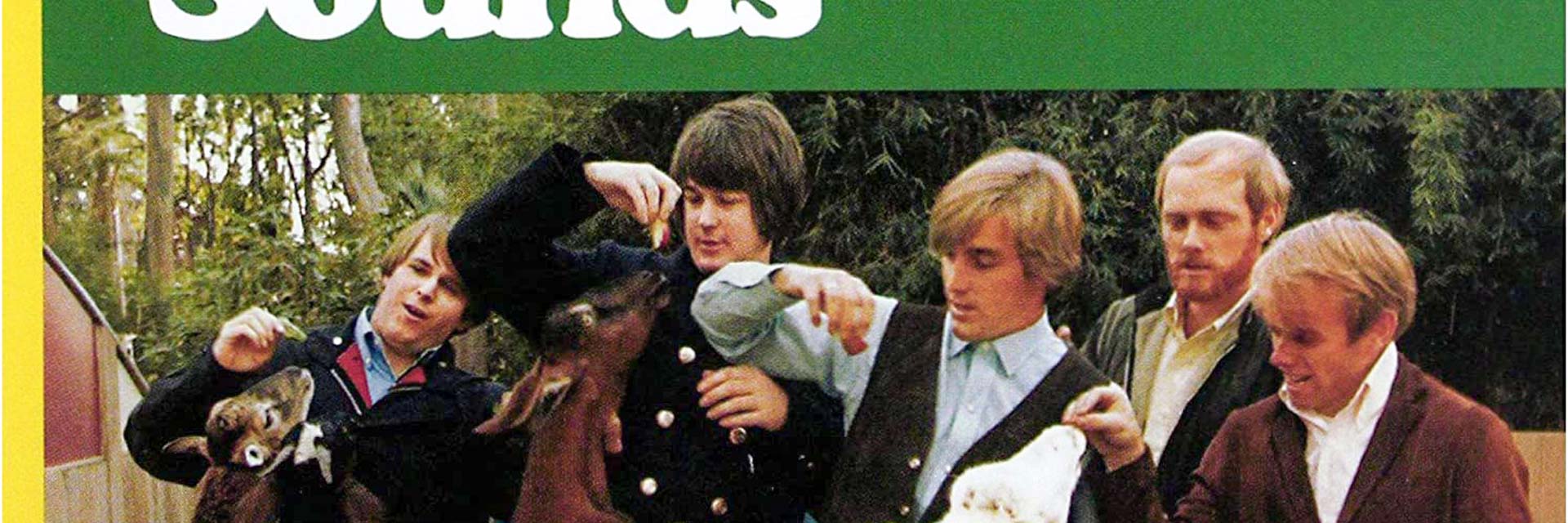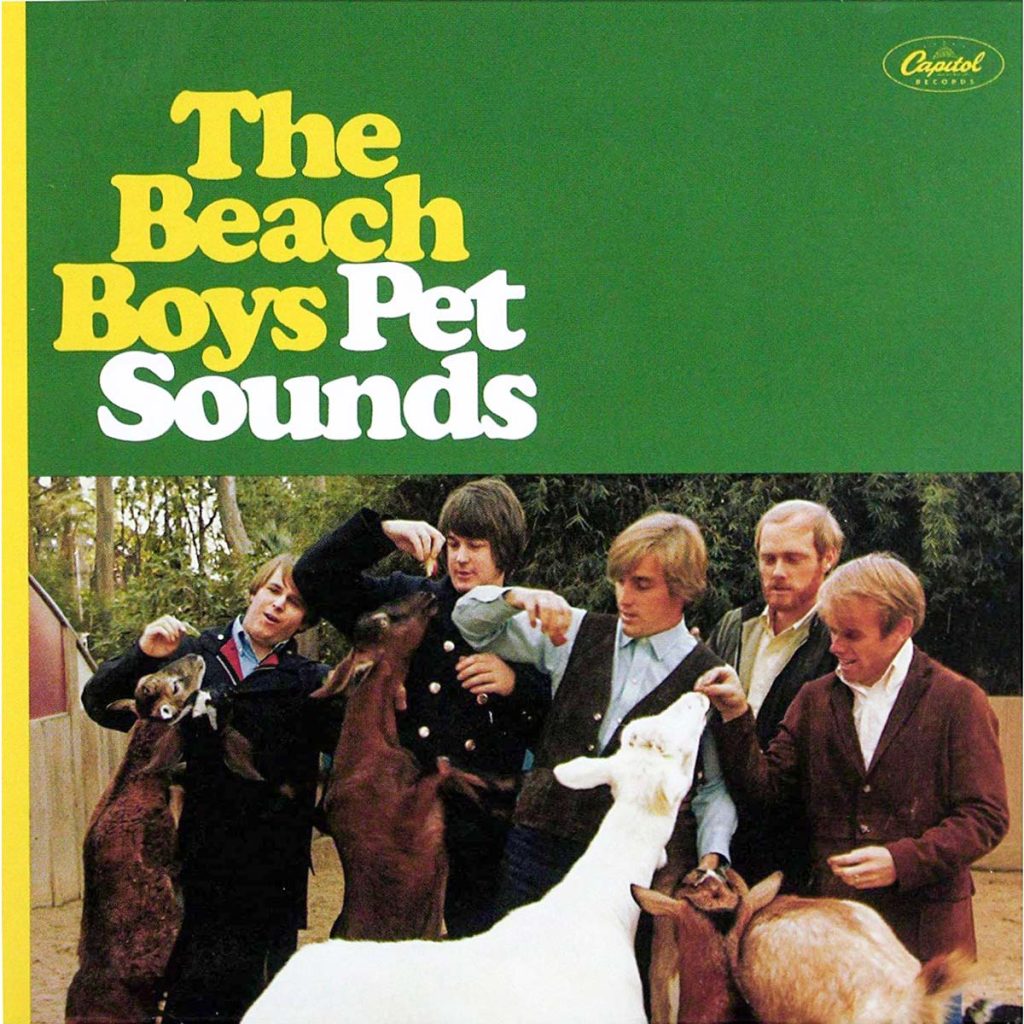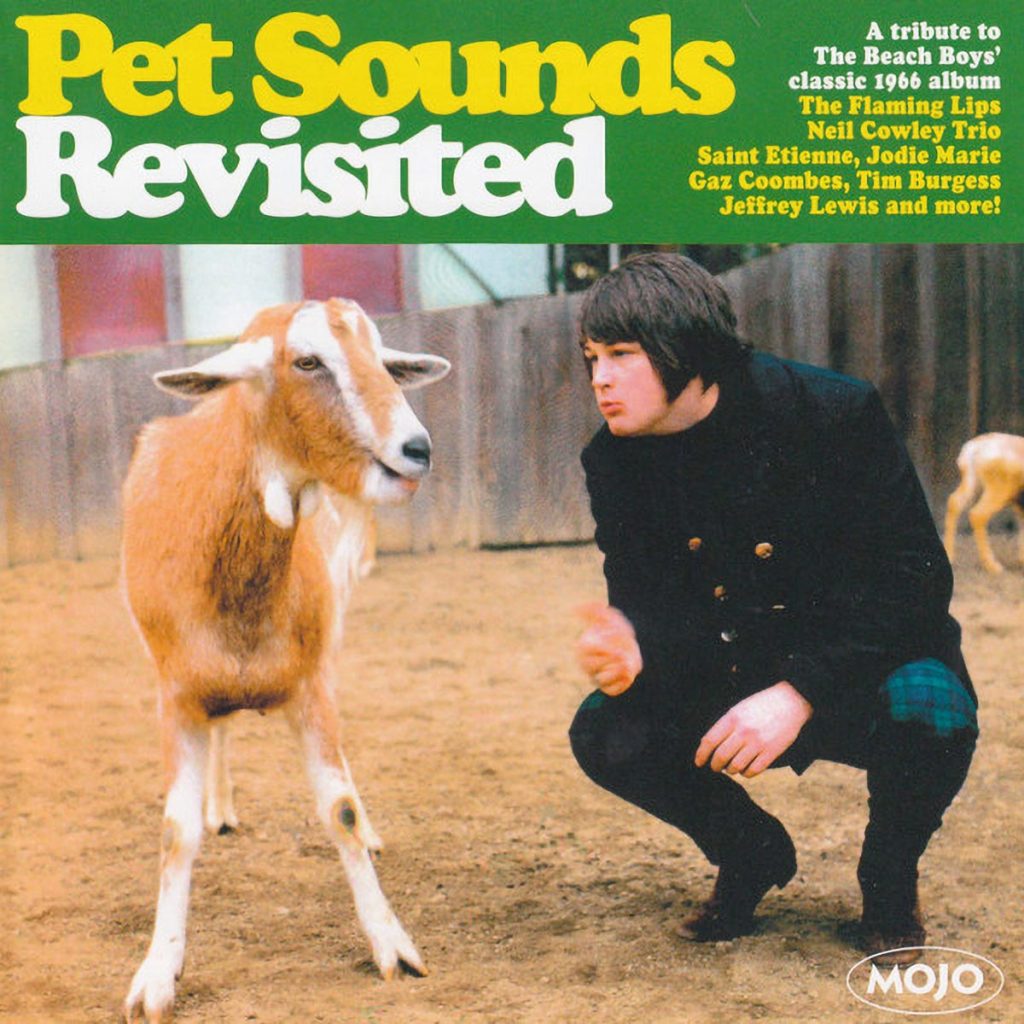When it all started with the Beach Boys (1961), the world still smelled like the fifties. Rock’n’roll and doo-wop singing were the main things that inspired the Wilson Brothers.
Brian, the oldest, took matters into his own hands, practicing polyphonic singing at home with his younger brothers. Their cousin Mike and best friend Al also got to join in, and the Wilson family’s father, a recreational composer, became the band manager. As the surf rock fad took off, the Beach Boys had their first hit, “Surfin’ U.S.A.” (1963). At that time, their songs spread the image of sunny, happy, relaxed Californian beach life all over the world. A harmless teenage dream with bubblegums and petticoats.
Then came what was called the “British Invasion” in the USA. Bands from the United Kingdom conquered the American pop world starting in 1964 – the Beatles, Stones, Kinks, Animals, Yardbirds … And as suddenly as this beat music broke in, as rapidly it developed further. Already in 1965, the Beatles released an album that seemed like a cohesive work, rather than a collection of singles: Rubber Soul.
Brian Wilson, head of the Beach Boys and self-proclaimed musical genius, was impressed. He wanted to revamp his band’s outdated image – and he wanted to do it with a clear response to Rubber Soul.
What he planned was nothing less than the “greatest rock album of all time.” To that end, he enlisted an assistant lyricist (Tony Asher) and, in marijuana-fogged work sessions, developed more than a dozen harmonically novel songs with unfamiliar timbres. He also ordered a small armada of auxiliary musicians, including a string orchestra and a number of West Coast jazzmen like Barney Kessel and Paul Horn. Inspired by Phil Spector’s production philosophy, he turned the recording studio into a “musical instrument.”
The album Pet Sounds – already the Beach Boys’ eleventh – did not break any sales records, but it did indeed correct the band’s image. Suddenly, the Beach Boys were considered a progressive rock ensemble. (Well, what was called “rock” back then – “chamber pop” would be more accurate.) As expected, the record was particularly well received in the United Kingdom. Paul McCartney called “God Only Knows” (the B-side opener) his all-time favorite song. He also revealed that the Beatles album Sgt. Pepper’s Lonely Hearts Club Band was in turn created in response to Pet Sounds. The first single, Sloop John B (the closing track on the A-side), even went to number one in Germany. Hardly any pop album has ever been more extensively and enduringly analyzed than Pet Sounds. To this day, it is considered one of the most important and revolutionary records in pop history. Even the Times called it “the best album of all time” as late as 1993.
Also revolutionary for the Beach Boys was the reorientation of the song lyrics – away from the Californian beach idyll and towards the current youth trends of 1966: spirituality, drugs, free love. This record, the band felt, was no longer for dancing, but for making love. That gives the album title its smart double meaning: “petting” (rumfummeln) vs. “pets” (Streichreichiere). During the photo session at the San Diego Zoo, however, the album title is said not to have been fixed yet – the record was rather supposed to be called “Our Freaky Friends”. This and the photo session were probably a poisonous allusion to the “animal” UK competition of the “Beatles” (beetles), “Animals” and “Yardbirds”. Conversely, the album title Pet Sounds may have originally referred only to the dog barking in “Caroline, No” or Phil Spector’s initials. For the title track, they then made an instrumental between surf and crime music; it was initially called “Run, James, Run” – with reference to the British James Bond films. How it all came together is not really clear anymore. What is certain, however, is that the band was banned from visiting the San Diego Zoo after the photo session.
For the British music magazine Mojo, too, “Pet Sounds” was the greatest album of all time in 1995. Several years later, this magazine initiated the tribute CD Pet Sounds Revisited.
All 13 tracks from the original album are covered on it by one of the editors’ favorite bands in each case: “Each artist had a free hand in the interpretation, and they all drew on their own experiences.” Most of the formations (such as Saint Etienne, Magnetic North) come from the British indie-pop and alternative-folk genres – with psychedelic sprinkles and many a charming female voice. They also gave a track to US rock band The Flaming Lips (“God Only Knows”) – and one of the two instrumentals to jazz pianist Neil Cowley (“Let’s Go Away For Awhile”). Pet Sounds Revisited is a collective tribute to “the greatest album of all time” that is as respectful as it is imaginative.
A photo from the original 1966 photo session was used for the cover: Brian Wilson, masterbrain, in dialogue with a zoo dweller. It is by far not the first visual homage to Pet Sounds on an album cover. Beach Boys member Bruce Johnston (who was not present at the photo session) said that Pet Sounds had “the worst cover in the history of the record business”. Another superlative.
The Beach Boys: Pet Sounds (Capitol, 1966)
Various Artists: Pet Sounds Revisited (MOJO, 2012)
The Beach Boys – Pet Sounds on discogs.com
Pet Sounds Revisited on discogs.com



